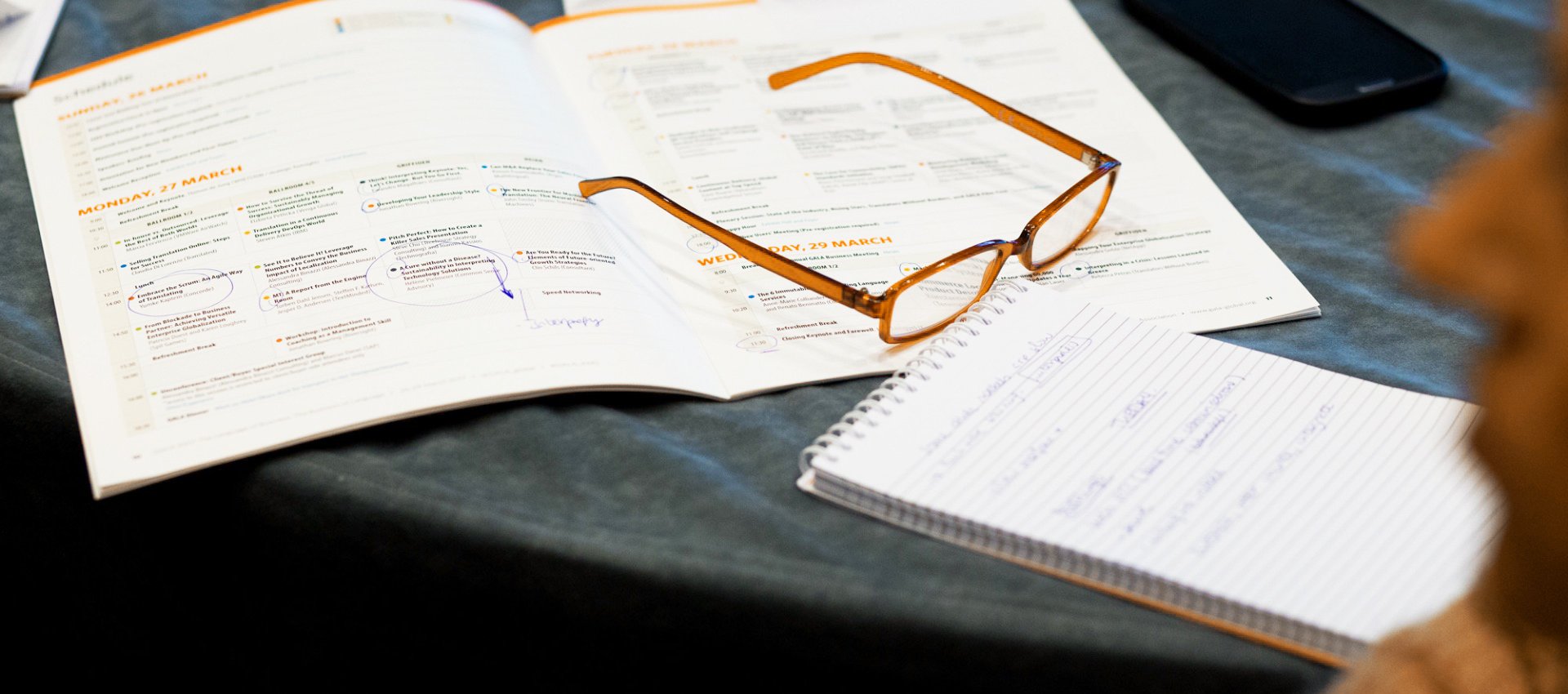- Home
- Resource Center
- Articles & Videos
- Making Events Inclusive: A Practical Approach
13 May 2025
Making Events Inclusive: A Practical Approach
Planning an event? Whether it’s a global conference, a product launch, or a local seminar, one key factor should always be on the checklist: accessibility. Ensuring accessibility allows everyone to engage fully, regardless of language, hearing ability, or mobility. But where to start? The GALA Interpreting and Technologies Special Interest Group has prepared a breakdown of simple, practical steps.
If you prefer to watch, here’s the full recording of a conversation with Vivana Bernabe (Welocalize), Aki Hayashi (Dell Technologies), Alexandra Proca (NetApp), and Yolanda Chan Yuen (Cisco). Scroll down for a summary of main points.
1. Think beyond translation: Go for globalization
Providing interpretation and translation is a common practice, but inclusivity goes beyond words. A truly accessible event means creating a seamless language experience before, during, and after the event. This includes translating registration pages, emails, signage, and follow-up surveys to ensure all participants can navigate the event effortlessly.
2. Mix and match tech with human solutions
Interpretation is no longer limited to live translators. A combination of human interpreters, AI-powered translation tools, and virtual interpreting platforms can enhance accessibility. Advances in machine interpretation, remote simultaneous interpretation (RSI), and hybrid solutions are making multilingual events more efficient and budget-friendly.
3. Make accessibility a priority
While logistics and content are important, accessibility should be integrated into the planning process from the beginning. This means offering:
- Sign language interpretation (visible on stage or through live stream)
- Live captions and enhanced subtitles for virtual attendees
- Audio descriptions for visually impaired participants
- Easy-to-access interpreting apps with QR codes on event materials
4. Data is your ally
Budget allocation can be challenging, but past event data offers valuable insights. In some cases, translation services have been underutilized simply due to a lack of awareness. Improving communication about language access can increase engagement. Analyzing data also helps determine which languages to prioritize, ensuring the best use of resources.
5. Advocate for accessibility
Many organizers want to be inclusive but may not know where to begin. Budget concerns and logistical challenges can create hesitations. However, accessibility isn’t about meeting a requirement: it’s about creating a better experience for everyone. Keeping discussions open, setting clear expectations, and providing real-world examples can help shift perspectives and encourage broader adoption of accessibility measures.
Accessibility is an ongoing process
Technology, best practices, and expectations around accessibility continue to evolve. What works today may need adjustments tomorrow. The key takeaway? Stay flexible, listen to participants, and use a combination of human expertise and technology to create events that truly welcome everyone.
By making small, intentional changes, events become more inclusive, fostering a more engaged, diverse, and connected audience. And that’s what great events are all about.
Expand Your Localization Expertise. Subscribe to Our Newsletter!


